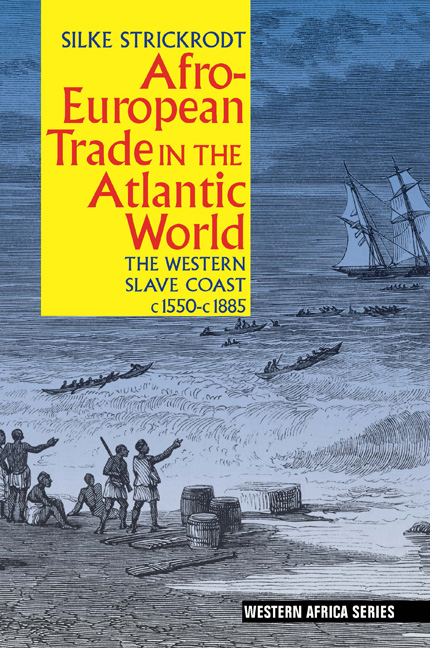Book contents
- Frontmatter
- Dedication
- Contents
- List of Maps
- List of Abbreviations
- Acknowledgements
- Map
- Introduction
- 1 The regional setting
- 2 The Atlantic connection: Little Popo & the rise of Afro-European trade, c.1600 to 1702
- 3 The era of the warrior kings: 1702 to 1772
- 4 The era of the traders: 1772 to c.1807
- 5 Disintegration & reconstitution: Political developments, 1820s to 1870s
- 6 From slaves to palm oil: Afro-European trade, c.1807 to 1870s
- Epilogue: The colonial partition & its consequences, 1870s to c.1900
- Bibliography
- Index
Introduction
Published online by Cambridge University Press: 05 May 2015
- Frontmatter
- Dedication
- Contents
- List of Maps
- List of Abbreviations
- Acknowledgements
- Map
- Introduction
- 1 The regional setting
- 2 The Atlantic connection: Little Popo & the rise of Afro-European trade, c.1600 to 1702
- 3 The era of the warrior kings: 1702 to 1772
- 4 The era of the traders: 1772 to c.1807
- 5 Disintegration & reconstitution: Political developments, 1820s to 1870s
- 6 From slaves to palm oil: Afro-European trade, c.1807 to 1870s
- Epilogue: The colonial partition & its consequences, 1870s to c.1900
- Bibliography
- Index
Summary
In 1553 Portuguese traders arrived at the mouth of the Mono river (in today's Republic of Bénin) and initiated commercial relations with the resident Hula people. As fishermen and salt-makers, the Hula had experience of inter-regional trade and had developed structures to support it, but the arrival of the Europeans signified something radically new for them. The Atlantic Ocean, which until then had been a barrier, now became a gateway, bringing the Hula into contact with other communities and cultures located on the edges of the various continents bounding the Atlantic. This contact was mainly commercial and economic, but also entailed social, cultural and political transformations, including, by the end of the period examined in this study, the colonial takeover by the French.
Although intensifying over time, this was no linear process; nor was its outcome predetermined. It involved changing trading partners, arrangements and networks as well as stops and starts and reversals, as in the latter half of the eighteenth century, when the Hula virtually dropped out of the Afro-European trade. However, even if they decided to step back from the trade or were pushed out of it by competitors, the world around them was transformed, directly or indirectly, by its influence. The ensuing changes included the arrival of new neighbours (Akan- and Ga-Adangme-speaking immigrants from the Gold Coast to the west, and, to the east, Fon from the interior), new technologies (such as firearms and sea-going canoes), and new plants, animals, diseases, currency and commodities from Asia, Europe and the Americas, to mention only a few. Less visible to historians but no less important were changes in outlook, values and taste, social organisation and religious practice.
This book is a study of the Afro-European commercial encounter on the western Slave Coast from its beginnings around 1550 to the colonial partition in the 1880s, particularly the slave trade but also that in ivory and agricultural produce.
- Type
- Chapter
- Information
- Afro-European Trade in the Atlantic WorldThe Western Slave Coast, c. 1550–c.1885, pp. 1 - 27Publisher: Boydell & BrewerPrint publication year: 2015

